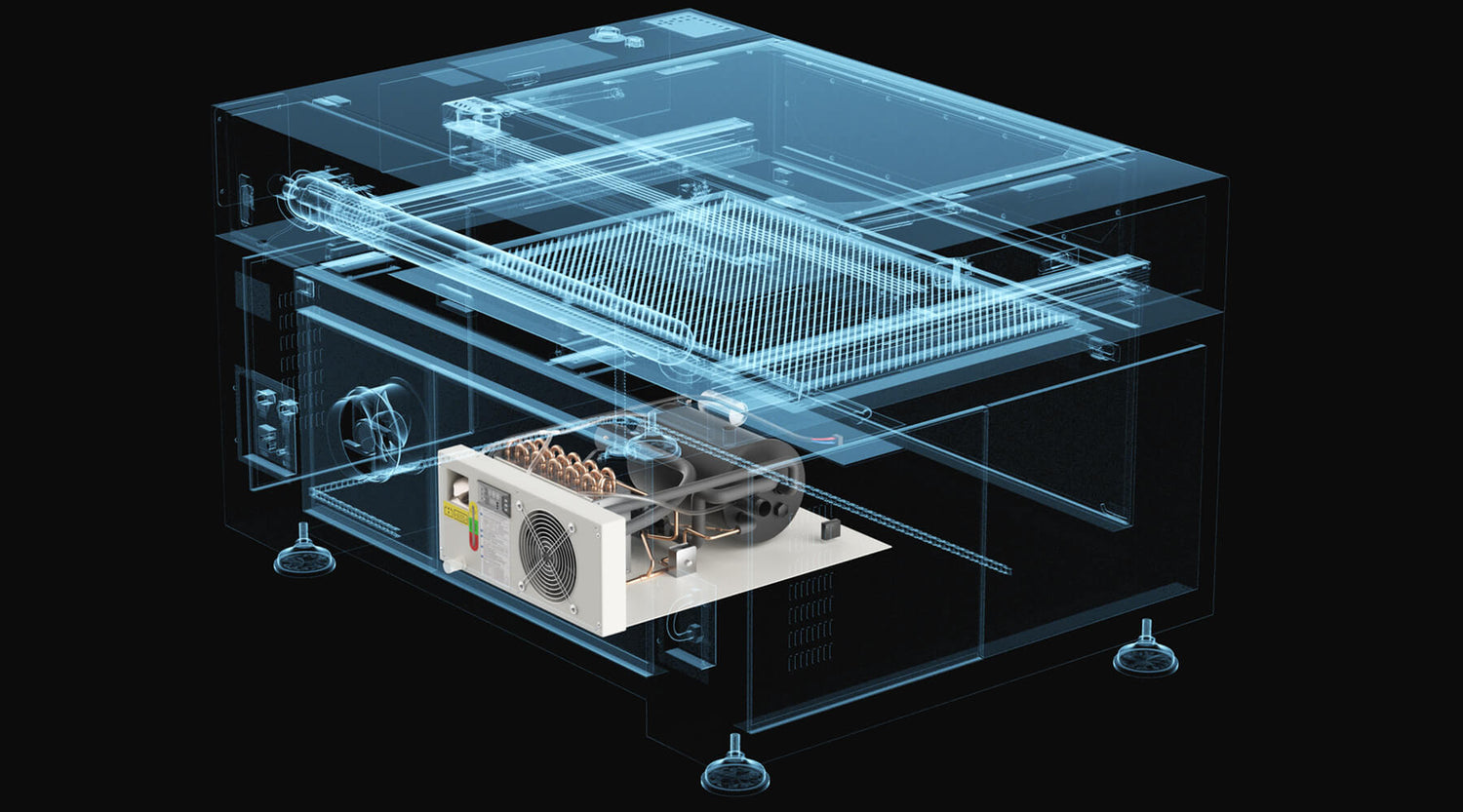Wood, paper, cork, and some plastics and other materials can be cut with a laser engraving machine. It can also be laser engraved on wood, cardboard, aluminum, stainless steel, plastic, marble, stone, ceramic tile, and glass. Some materials, however, should not be laser cut and engrave. Not only will these materials produce a large number of harmful substances that will harm your body during the laser engraving process, but their flammability will cause fires and other safety accidents, endangering your safety and damaging your equipment. Furthermore, the cutting effect of these materials is not ideal. To avoid accidents, we should be aware that the following materials are not suitable for laser cutting and engraving.
Materials you should not process with a laser
PVC / VINYL / LEATHER / ARTIFICIAL LEATHER
Laser cutting machine will emit pure chlorine gas when cutting PVC, artificial leather, leather and other materials. It can also damage optical and motion control systems and cause corrosion of machine metals. This gas is a poisonous gas with a pungent smell that is harmful to human health. So PVC is more suitable for the traditional mechanical method of cutting.
ABS
Normally, a laser beam is hot enough to evaporate a lot of material. But it doesn't support materials like ABS and HDPE. Because they tend to melt rather than evaporate, leaving messy worktables and poor quality cuts. At the same time, laser cutting ABS will release cyanide gas, which is a colorless toxic gas, poisoning can lead to hypoxia asphyxia. In addition, ABS are not easy to cut but are prone to fire. It tends to melt rather than vaporize in addition, it tends to leave behind molten viscous deposits that are difficult to clean. ABS is another incredibly durable, impact-resistant thermoplastic, which is why it's often used for things we don't want to break, such as computer parts, medical supplies, auto parts, and protective caps.
Thick Polycarbonate/Lexan
Polycarbonate is usually a flat material. The laser cutter can cut polycarbonate up to 1 mm. But easy to cause material discoloration. In the case of thick material, if continue to use the laser cutting machine to cut, is not recommended. Because it is not only inefficient, but also a waste of materials. What's more, it can create a long plume of smoke, damage optical systems, confuse machines, and even catch fire. Studies have found that polycarbonate is 250 times more impact resistant than glass, and can also withstand extreme heat, acids and chemicals such as gasoline. The window of the laser cutter is made of Polycarbonate because polycarbonate strongly absorbs infrared radiation! But polycarbonate is a poor choice for laser cutting.
Fiberglass
Fiberglass is a mixture of glass and epoxy resin. Glass itself is notoriously difficult to cut. Use epoxy, which is more likely to produce toxic fumes. Carvers must pay attention to protect their own safety as far as possible, do not make themselves to inhale these toxic gases, which is a nightmare. In addition to this glass fiber, there is also a coating carbon dimension can not be cut.
The material is supported by viscose fiber
If these materials are rubber backed, do not use a laser cutter to cut them. The glue evaporates and forms a coating on the lens. Then, the coating is covered on the lens, which will break when heated. The residual glue is worse than the resin. If it is not removed, it will damage the lens. Therefore, when carving, we must pay attention to the inspection of the material, and do not think it is OK to take chances. Materials such as thin wood laminates and acrylic tiles can be laser cut, but if they already have a layer of glue, they will become unsuitable for laser cutting. The peel off backing at the bottom facilitates installation. This backing will evaporate to form a coating on the lens, which will heat, cloud or break the lens. Residual glue is more dangerous than resin. Any attempt to remove it may damage the lens.
HDPE/foam polystyrene/polypropylene foam
These three materials are highly flammable. Laser-cut HDPE quickly catches fire, melts and becomes sticky and difficult to handle. And styrofoam is the most flammable material, which can easily cause laser fires. The molten polypropylene foam droplets continue to burn, turning into hard droplets and pebbles. High-density polyethylene (HDPE) is an extremely versatile thermoplastic polymer used in almost everything from milk jugs, shampoo bottles, bleach bottles, cutting boards and pipes. However, because HDPE is made from petroleum, it is highly flammable and releases toxic gases when processed at high temperatures. Not only is trying to laser cut HDPE dangerous, it can also be a very frustrating experience - in layman's terms, whatever you try to cut will turn into a big, slimy mess!
Final Thoughts
As we all know, fiber laser engraver can not cut wood, MDF, acrylic, rubber and other non-metallic materials, in addition, it is not recommended to cut aluminum, copper, aluminum and other rare metal materials for a long time. Brass. Because they are highly reflective materials. Because the laser wavelength is not within the ideal absorption range of these materials, the absorption effect is not good. And most of the energy is reflected back, easy to damage the laser head in front of the protective lens. It also increases consumption of consumables.




